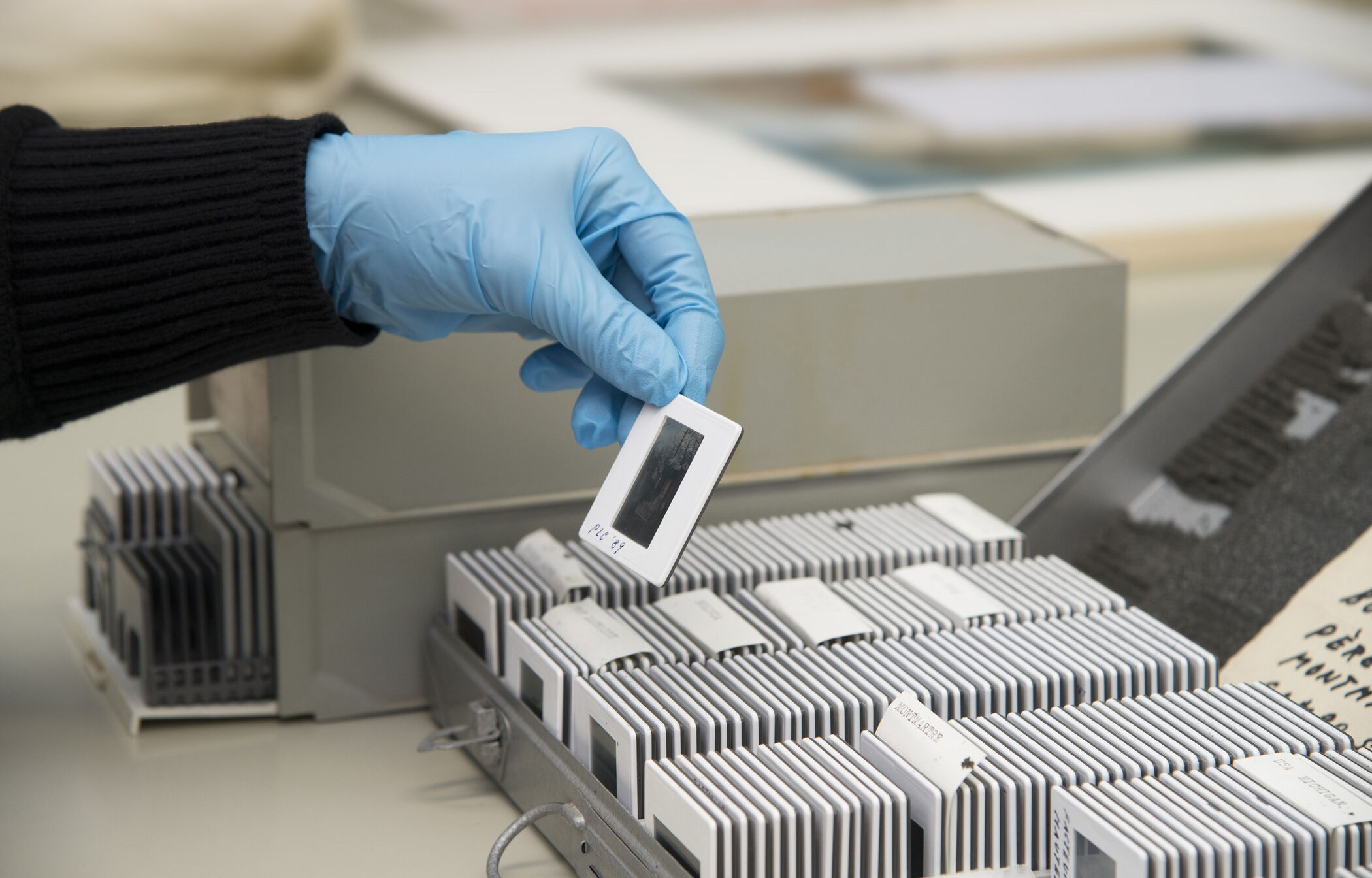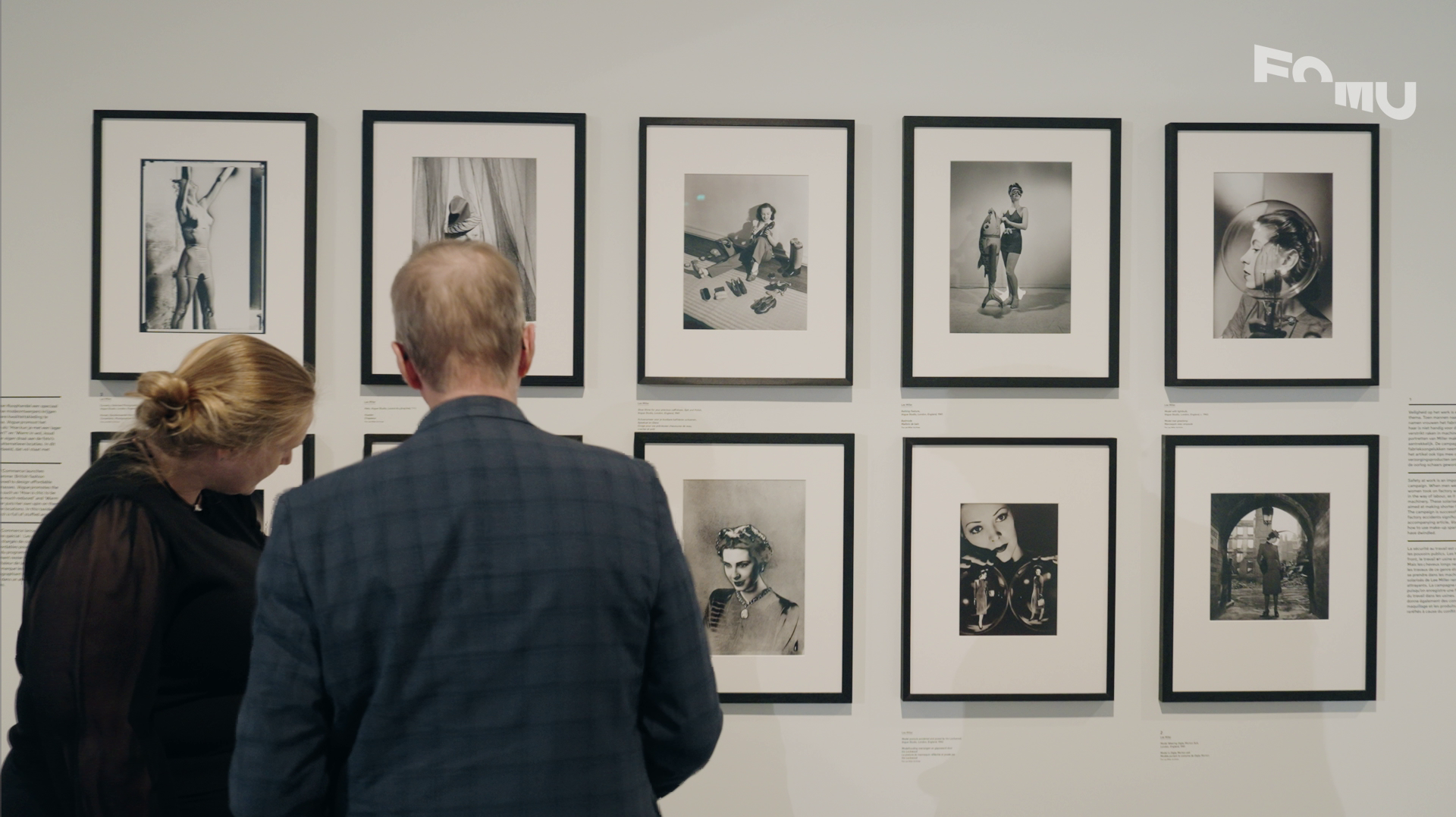
FOMU Collection
FOMU launches online databank of Gevaert photo paper
In the past years, FOMU employees have digitised over 1,300 packages of photographic paper and 70 suspension files containing information about Gevaert photographic papers as part of the Gevaert Paper Project (2020-2024). Starting this month, all information can be accessed through a Wikibase databank. The aim of this databank is to make this information accessible to the general public.
At the start of the Gevaert Paper Project, FOMU set itself two goals. Firstly, the project is focused on preserving knowledge about analogue photography that is present in the Agfa-Gevaert collection. Despite being about recent photographic history, expertise regarding these materials is disappearing at an alarming speed. The second goal is to make the collection widely available to researchers and the general public. The launch of the Gevaert Wikibase and the accompanying website makes a first part of the collection accessible online.
This project was realised in collaboration with meemoo and received support from the Flemish government.
WIKIBASE?
A Wikibase databank is a private version of the same software used in Wikidata, a digital ecosystem closely related to Wikipedia. The Wikibase ‘as it is’ (meaning: lacking a user-oriented design) is mostly aimed at people familiar with the world of data. In order to also attract a wider audience, the decision was made to develop a separate web site to present the data in the Wikibase in an accessible manner.
Because we also receive many requests from abroad for information about the collection and the photo papers, it was decided to start by creating an English-language web site. A Dutch version will be added at a later point.
FOMU & GEVAERT
The historical Agfa-Gevaert collection was moved to FOMU in 2017 after an intensive trajectory of appreciation. Due to the size and diversity of the archive, FOMU decided to disclose the archive piece by piece. In 2020 the Flemish government eventually allocated funding to the Gevaert Paper Project, a project in three phases aimed at realising the digital availability of information regarding the Gevaert photographic papers from the 1894-1964 period.
Since paper types are not a typical form of physical heritage objects – and therefore do not fit within FOMU’s general collection management system – we have sought an alternative system for sharing data about photographic paper. Meemoo, a FOMU partner within the project, saw an opportunity to test the use of a Wikibase databank within the field of cultural heritage.
GETTING STARTED WITH THE WIKIBASE
The website includes several ways of getting started with the data about Gevaert photographic papers. All 377 products, 104 product series, 27 patents and 33 manuals can be viewed on the home page in a single click.
The databank’s distinction between products and product series is based on Gevaert’s ways of releasing new photo papers. A new product was always launched firstly under a specific product name, such as ‘Ridax’, before the specific characteristics of the paper were set into product codes to facilitate recognisability, such as ‘Ridax 8XZ’. This code indicates that the product is a white, glossy paper with extra soft contrast.

In addition, the home page displays which product series were produced over the longest periods and were therefore the most popular with consumers. The absolute frontrunner here is the ‘Orthobrom’ brand, which remained in production for no less than 58 years (from 1903 to 1961) and continued its existence under the brand name ‘Gevabrom’ after this date.

SEARCHING THE WIKIBASE
Those who are interested in specific properties of photographic papers can also search directly for those characteristics through the home page, the ‘explore’ page, or the search option in the top right of the screen. This is possible for the properties of reflection, surface texture and surface contrast.
The ‘data’ page offers several insights into the databank. Examples include a survey of the various iterations of the Agfa-Gevaert company, a listing of the products with the most product instances, and a list of photo papers for which patent applications were filed, but that never actually went into production.
Do you want to work with the databank information yourself? The web site also includes a manual for writing your own SPARQL queries. SPARQL is a search language that can be used to search databanks: SPARQL queries are the search terms that are formulated for these search requests.
MAY 2024: EXHIBITION GEVAERT PAPER PROJECT AT FOMU
The collection of photo papers and photo paper packaging designs will be on display at FOMU starting the end of May. The expo on Gevaert and the paper project will run from May 31st to August 18th, on the first floor of the museum, and will form the conclusion of the Gevaert paper project.















